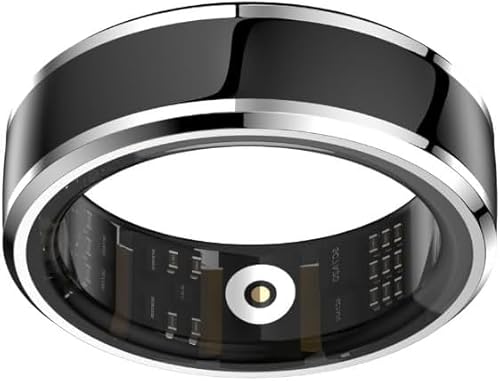OK, I've since started looking at that study (from Ottawa), and the shockingly one-sided numbers for strokes and clots are basically balanced by similarly one-sided numbers for re-ops etc.
Their "MAPE" composite measure of bad outcomes unfortunately includes ReOperation as one trigger, rather than the more meaningful Structural Valve Deterioration. (The latter includes people who "need" a valve replacement, but aren't candidates for surgery, so they don't GET one.) The resultant bias would probably work in favor of bioprosthetic (tissue) valves, I think.
Yes I said in the first post (#16) about that study that I didn't like it much because it went by MAPE, however I personally think that would have the bias go the other way, since the majority of "events" for a tissue valve is a REOP (which the vast majority of people do fine with) compared to the majority of "event" the Mech is mainly strokes (Clot or bleeding), clots ect. since "A composite outcome of major adverse prosthesis-related events (MAPE) was defined as the occurrence of "reoperation, endocarditis, major bleeding, or thromboembolism"
I personally don't think they really are equal.
Maybe IF they compared a "bad" out come from the REDO against the stroke, or hemorrage it would be more meaningful to me at least. Especially since for this study the bleeds or strokes were major ones.
"Prosthesis-related complications were recorded according to the Guidelines for Reporting Morbidity and Mortality after Cardiac Valvular Operations [5]. Briefly, stroke was defined as the presence of a neurological deficit lasting more than three weeks and was confirmed with computerized tomography of the head [4,5]. Bleeding events were classified as major if they required surgery, hospital admission, blood transfusion, were intracranial in location, or caused death. Reoperation was defined as any operation that repaired, altered, or replaced a previously operated valve [3,5]."
I personally don't worry about the exact data of 1 or 2 studies especially since there are only a couple comparing the valves , and there are tons of studies studying each valve by themselves, which I am sure many people (patients and doctors) take them into consideration to when comparing the different valve choices. I read a few studies .. (well I have lots of time so maybe more than a few) and see what the majority show..IF there is a majority. Not to mention as was pointed out several times, by the time you do a study and follow that set of patients for years and write up the study ect, already it is most likely outdated since newer and improved things have come along.
Really to learn the most recent findings, opinions ect, I go more by talking doctors and watching the webcasts from the different heart doctors conferences, since not only is that where many of the other doctors learn the up to date news, but they also talk about current trials, that may not be written up for a few more years. Some of them are pretty interesting when they have the Q&A and discussions after the sessions.
The ONLY reason I even posted the studies comparing valves , was because people wanted to know why, or doubted "Your lifespan expectation is statistically the same for either choice, as the dangers of blood clots and anticoagulation with mechanical valves seem to balance against the dangers of reoperations with tissue valves over time." So I posted a few of the most recent studies showing that. Since IMO I think that is the point someone choosing a valve is considerring.
FWIW since you are going over the posted studies
I went to read this study Dan wrote about (in post #22)
"2. Peterseim DS, Cen YY, Cheruvu S, Landolfo K, Bashore TM, Lowe JE, Wolfe WG, Glower DD. Long-term outcome after biologic versus mechanical aortic valve replacement in 841 patients. J Thorac Cardiovasc Surg. 1999; 117: 890–897. Found at:
http://jtcs.ctsnetjournals.org/cgi/c...e2=tf_ipsecsha
This study was good in that it compared the St Jude bileaflet valve to the Carpentier-Edwards biological valve. However, the duration of the study was only ten years. With biological valves failing between 12 – 20 years, 10 years is not long enough to test the longevity of the biological valve. The study would need to run at least 15 years, if not 20 – 25 years to get more meaningful results. However, the study concluded: “Patients with an expected survival of less than 10 years (more than 65 years old, renal disease, lung disease, patients who are more than 60 years old), ejection fraction of less than 40%, or coronary disease would be reasonable candidates for aortic bioprostheses to avoid anticoagulation with an extremely low likelihood of aortic valve reoperation. Results tend to favor mechanical aortic valves in patients under age 65 years with a life expectancy of at least 10 years.”
but I noticed it is the CE PIG valve not the Bovine pericardial perimount.
"From 1976 to 1996, 1676 patients underwent aortic valve replacement at Duke University Medical Center. To obtain a more homogeneous population, we excluded patients undergoing a concurrent operation for placement of another valve, patients aged less than 18 years, patients receiving valves sized less than 19 mm, and patients with a previous sternotomy. To further improve population homogeneity and to eliminate prostheses that are now less used, we also excluded 489 patients who by surgeon preference received aortic homografts or prostheses used in small numbers. The resultant study population consisted of all 841 patients undergoing isolated, first-time aortic valve replacement with the Carpentier-Edwards (CE) standard porcine prosthesis (n = 429; model 2625; Baxter Healthcare Corp, Irvine, Calif) or the St Jude Medical (SJ) prosthesis
I know the centers that did these studies are taking part in the percutaneous valve replacement trials, so I wonder what their thoughts would be now, since you can't have a mechanical valve replaced in the cath lab- at least as they are being done now.
It will be interesting to see what happens the next decade





















